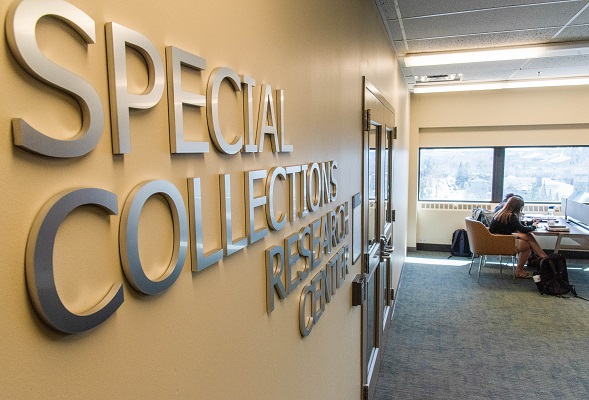The records of the National Microfilm Association concern the work of the organization between 1944 and 1973, with scattered materials documenting some activities as late as 1990. The materials consist of correspondence, constitutions, by-laws, handbooks, meeting minutes, membership lists, biographical information, financial records, company publications, and articles and scholarly presentations.
In December 1982, Dr. Vernon Tate donated a large collection of manuscripts and publications documenting the history of microphotography and his own career as a historian, archivist, librarian, and microfilm pioneer to The University of Michigan Libraries. This donation provided the impetus for the creation of the Power Collection for the Study of Scholarly Communication and Information Transfer in the Special Collections Library. The Power Collection is named in honor of Dr. Tate's long-time friend, Eugene B. Power, the founder of the micropublishing firm University Microfilms, Inc.
Dr. Tate's donations to the Power Collection contain over 140 linear feet of manuscripts, including his own personal and professional papers, an extensive collection of records of the National Microfilm Association (NMA), and the Microfilm Pioneers Collection which contains the papers of several of Dr. Tate's colleagues concerning microphotography and the activities of NMA. In addition, Dr. Tate donated an extensive collection of serials and monographs relating primarily to the fields of photography, microphotography, and archives.
The earliest records concern a meeting held in 1944 to discuss the creation of a microfilm trade association and the subsequent NMA founding convention held in Cleveland, Ohio, in March 1945. Included in the collection is the correspondence of Franklin Morgan, one of the organizers of these two meetings and the first president of NMA, covering June 1944 to October 1945.
Morgan resigned as president in October 1945 and vice president Eugene Power succeeded him. At about the same time the board of directors hired Wilfred Knighton as secretary. He served in this position until September 1946, when the board replaced him with Vernon Tate.
The records covering the first years of NMA's existence are fairly substantial. For these years the files contain extensive correspondence of the presidents and secretaries of the organization, along with minutes of annual meetings and board meetings and scattered materials on committees and finances.
After the first few years, NMA declined in strength and activity and the quantity and quality of the records reflects this. There apparently were no annual meetings after 1946 and no board meetings after 1947. The president and secretary continued an active correspondence through 1948, although many of the letters from 1947 and 1948 concern attempts to revitalize the organization.
Between 1949 and 1951, NMA was completely dormant. The only records consist of occasional letters inquiring about the organization or specific questions on microfilming techniques. Vernon Tate continued to answer letters addressed to NMA, even though the organization was inactive.
With the revitalization of NMA after a meeting at the Library of Congress in 1952, extensive files on all aspects of the organization's work appear once again. One major difference in the records, however, is that the correspondence file no longer contains a complete record of the president's correspondence. It consists of letters received and sent by executive secretary Vernon Tate, with occasional copies of presidential letters sent to Tate for his information.
The records grew in quantity and complexity as the years passed, especially during the 1960s when NMA underwent tremendous growth in membership and activities. It was at this time that the organization established much of its committee structure, founded state and regional chapters, and began a Fellows organization for individuals who had been awarded that honor.
In 1969, NMA hired a professional executive vice-president who took over some of Vernon Tate's duties. The following year the organization moved its headquarters from a building owned by Tate in Annapolis, MD, to Silver Spring, MD, closer to Washington. The files for succeeding years reflect Vernon Tate's increasingly limited role and no longer include the files generated by the headquarters staff.
Tate left his positions with NMA at the end of 1973 and the scattered materials in the collection dating from later years relate mainly to his continuing role with the Fellows organization. Included are correspondence and minutes of Fellows meetings.
Researchers should be aware that some NMA-related materials also appear in Tate's Personal and Professional Papers. Included in that collection is Tate's correspondence concerning the organization for the years 1944 to 1946, before he became an officer, and scattered correspondence from the years after Tate left his positions with NMA in 1973.
Additional materials on NMA appear in the Microfilm Pioneers Collection. Several officers of the organization donated their papers to that collection.
Special Collections Library
Power Collection for the Study of Scholarly Communication and Information Transfer
The University of Michigan
(Forms part of the Vernon D. Tate Archive of Micrographics Collection)
